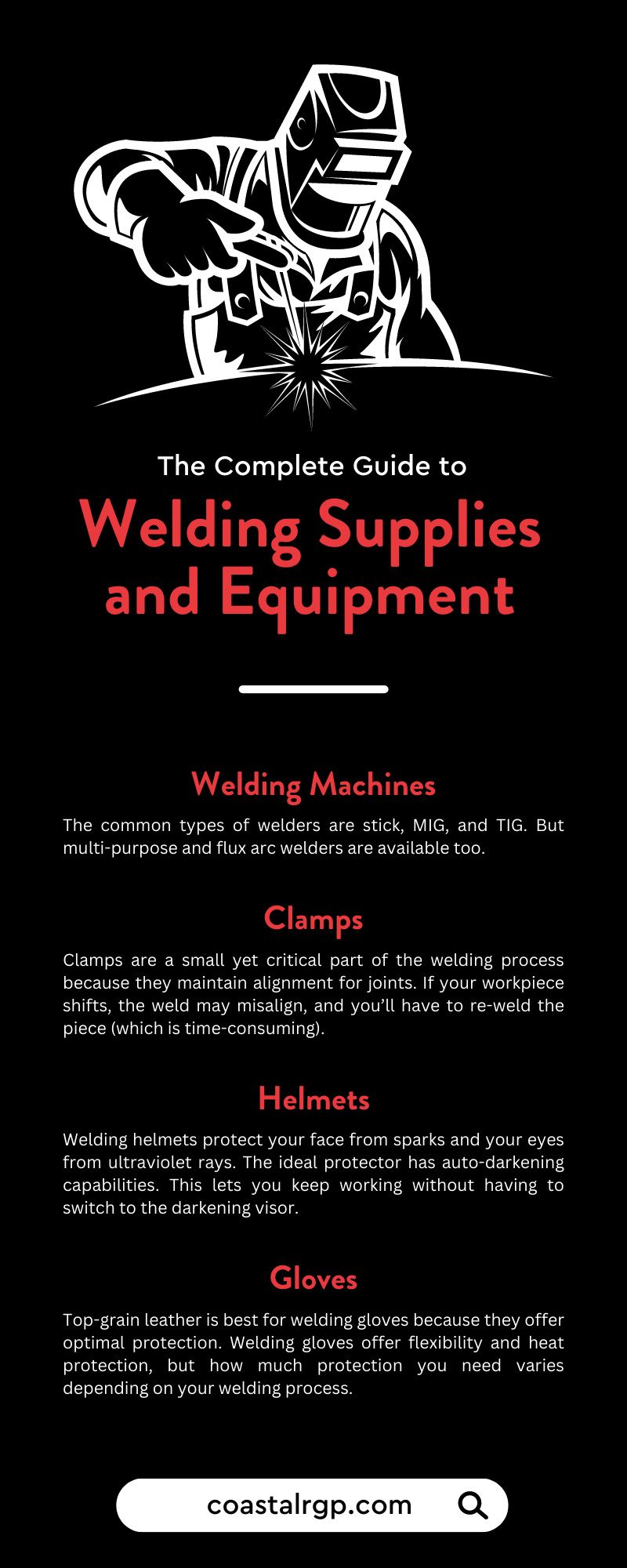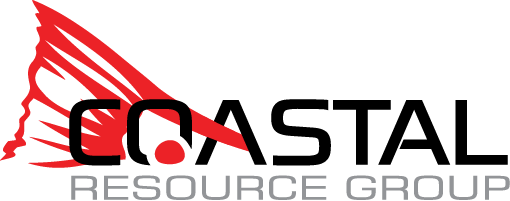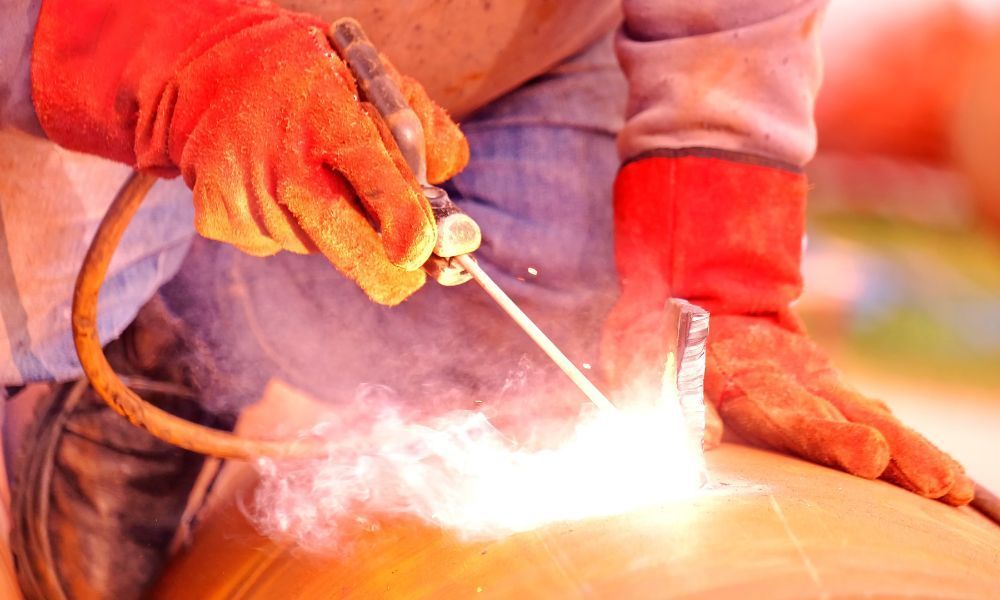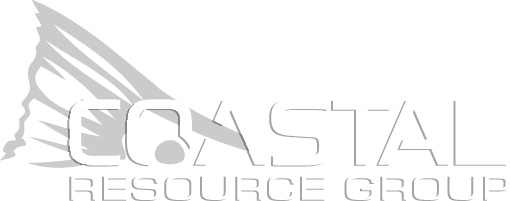If you want to complete high-quality projects, you need the right welding equipment. Whether you’re a beginner or a professional welder, you can increase your knowledge of practical tools. Look at the complete guide to welding supplies and equipment for more information!
What Is Welding?
Welding combines two parts using heat or pressure to create a joint. You call the joint a seam or weldment. Generally, welding uses intense heat to melt filler metal, while a shielded arc (created by a gas) protects the original metal.
Common welding applications include the automotive, aerospace, manufacturing, and construction industries. Metal is also a popular art medium; many artists use welding to create pieces.
Welding Machines
The common types of welders are stick, MIG, and TIG. But multi-purpose and flux arc welders are available too.
Stick welders generate strong welds and are suitable for most alloy metals. However, some welders find it challenging to create a lasting arc.
MIG (metal inert gas) welding is the perfect machine for beginning welders. The simple machine can create professional-looking joints on thick and thin metals. Please note that MIG welders require separate shielding gas, but that doesn’t impact the fast and easy welding experience.
TIG (tungsten inert gas) is complex with more precision than other machines. You use an amperage foot pedal to control the machine. This welder is ideal for aluminum, copper alloys, and thin alloys.
Welding Gases
Welding gases are essential for a slick, stable weld, and you use them to protect the weld from bad chemical reactions that can influence the appearance and strength of the project. It’s important to assess the difference between inert and reactive gases.
Inert gases are stable and have low to no chemical reactivity with their surroundings. They’re a protectant and don’t impact the weld. You’ll typically use helium and argon as inert gases for welding. Reactive gases, on the other hand, chemically combine with things in the weld and can change the properties of the piece. Generally, you use reactive gases to alter the nature of your weld. Common reactive gases include hydrogen, oxygen, and carbon dioxide.
The main reasons you use welding gas is to shield, blanket, purge, and heat metals. The gases influence the welding process and control the environment to prevent bad welds or severe chemical reactions.
Electrodes
Welding electrodes are metal wires with a chemical coating. The wires sustain the welding arc and provide filler metal for joints. There are different electrodes that pair with welding machines.
Stick welding uses a melted fragile electrode to produce the welding joint. Many people use the E6010 electrode, but the E6011 and E6013 are popular choices, too.
MIG welding uses a consumable electrode wire that goes through the welding torch. The wires range in thickness to accommodate projects. For instance, most tasks use wires with .023 to .045 thickness. However, larger projects require thicker wires.
TIG welders use non-consumable electrodes that are available in five choices. But ceriated and lanthanated electrodes are ideal for TIG welding applications.
Clamps
Clamps are a small yet critical part of the welding process because they maintain alignment for joints. If your workpiece shifts, the weld may misalign, and you’ll have to re-weld the piece (which is time-consuming). That’s why clamps are handy to have. Ultimately, the more clamps you have, the better.
Grounding Clamps
Despite the name, grounding clamps don’t hold workpieces together. These clamps protect you from electric shocks and make it easier to start an arc. The most common ground clamps are copper or brass. However, some clamps are cast-iron or aluminum. Grounding clamps are the most effective when they constantly touch workpieces.
Helmets
Welding releases ultraviolet rays from the electric arc. The extreme brightness can inflame your corneas and burn your retinas. In severe cases, some people go blind because they fail to use face protection. Fortunately, dark face shields can minimize exposure to ultraviolet rays.
Welding helmets protect your face from sparks and your eyes from ultraviolet rays. The ideal protector has auto-darkening capabilities. This lets you keep working without having to switch to the darkening visor.
Gloves
Top-grain leather is best for welding gloves because they offer optimal protection. Welding gloves offer flexibility and heat protection, but how much protection you need varies depending on your welding process. Stick welding generates the highest heat and needs firm, heavy-duty gloves that withstand harsh temperatures. On the other end, TIG welding produces a low amount of heat, and you can use light, flexible gloves.
Goatskin leather gloves are ideal for TIG and MIG welding. Deerskin gloves shape your hands, which makes them comfortable with the right fit. For stick welding, the ideal gloves are pigskin, elk skin, and cowhide.
Clothing
Since welding requires intense heat, you may encounter flames, which can result in injuries if you’re not careful. Synthetic shirts that aren’t for welding are dangerous because they can catch fire easily.
Long sleeves are critical for welding work because the ultraviolet rays can burn exposed skin. There are different options for welding clothing, but the temperature of your work site or shop can influence what you wear.
Leather clothes are the safest and warmest option. That’s why several welders wear leather sleeves, top-grain gloves, and leather aprons. Wear a cotton shirt under protective gear for warmer days because it’s not as flammable as synthetic garments.
Safety Products
Steel-toe shoes are another piece of safety gear that protects your feet from fallen metal, sparks, and other materials. Additionally, welder machines are loud and can affect hearing, so earplugs eliminate some noise.
Besides gear, your workshop needs a fire extinguisher, fire retardant barriers, fuel storage solutions, and ventilation. Fire extinguishers can put out flames and protect you (and others) from fires. Fire retardant barriers prevent sparks from catching on your clothes, and fuel storage solutions secure fuel and keep them sitting upright. Last but not least, all workstations need ventilation to eliminate harmful fumes.
You can achieve safe and effective welding with all the right things!
Buy Welding Supplies
Now that you understand the complete guide to welding supplies and equipment, it’s time to purchase your materials. Coastal Resource Group is a leading supplier of industrial welding supplies. We offer top-of-the-line products and fast shipping. We’re a one-stop shop for industrial products, including safety equipment, so purchase everything you need today!



